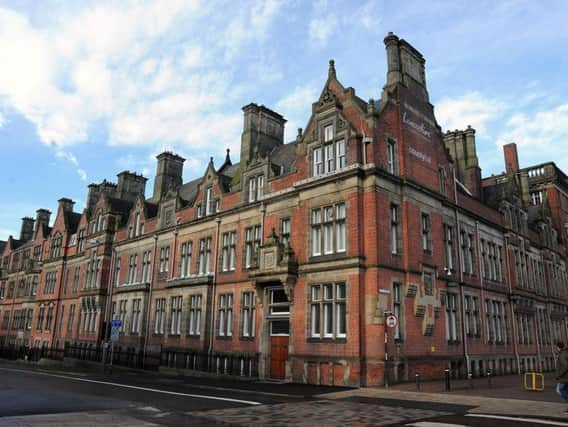Lancashire couple 'did not cause emotional damage' to children aged three and seven they allowed to transition to different gender


Lancashire County Council launched care proceedings in respect of two of the pair’s birth children and three foster children in July 2018.
But by the time the matter came before a private session of the Preston Family Court last month, the authority had “re-evaluated” the case - and sought permission to have it dropped.
Advertisement
Hide AdAdvertisement
Hide AdOne of the couple’s own children - identified in the judgement as ‘N’ - transitioned from living as a boy to a girl at the age of seven. The child was referred to the Tavistock gender identity clinic in London and his parents had his first name officially changed by deed poll the same month.
Three years later, one of the couple’s male foster children - known as ‘H’ - began to be dressed in girl’s clothes at the age of three.
When he started school, he arrived in a girl’s uniform - in spite of the fact that the school had requested he be dressed as a boy.
The school had already made a referral to children’s services more than a year earlier after the foster mother had allegedly remarked of the infant, “Here’s another one for the Tavistock”.
That led to a “strategy meeting” at the local authority.
Advertisement
Hide AdAdvertisement
Hide AdA member of the couple’s extended family also contacted the council back in 2013, alleging a “preoccupation with and encouragement of gender dysphoria in three [of their] children”.
But an investigation was prompted last year after the parents - known as ‘TP’ and ‘CP’ - referred a foster child who was then living with them to mental health services.
The child and adolescent mental health team considered the referral contained a “significant degree of exaggeration”.
The subsequent investigation found five “current causes of concern” - including over gender dysphoria [or dissatisfaction] and the general mental and physical wellbeing of the children.
Advertisement
Hide AdAdvertisement
Hide AdCare proceedings began and it is understood that the foster children were moved to alternative placements, while the couple’s birth children remained in the family home.
However, expert reports commissioned as part of the proceedings caused the county council to change its assessment and conclude that some of the criteria which they had put forward to justify the process no longer met the required “threshold”.
A report by Vickie Pasterski, a consultant psychologist and gender identity expert, concluded that N - now known as ‘R’ - and H had presentations which were “consistent with a diagnosis of gender dysphoria”.
“Allowing R to present...according to her preferences, while providing appropriate levels of support, is consistent with best clinical guidance,” Dr Pasterski said.
Advertisement
Hide AdAdvertisement
Hide AdShe also said that while it would not be expected to find two instances of gender dysphoria in the same family, she had witnessed similar cases in the course of her work.
A consultant paediatrician, Dr Ward, found no evidence “of fabrication or induction of illness by CP and TP in relation to R”.
However, the medic noted that: “Failure to seek medical support and opinion leaves H at significant risk of emotional harm as a result of being presented in school as a girl.”
An independent social worker, Alex Sayer, also expressed “reservations” about such early gender transitions and questioned whether there was sufficient opportunity for R and H to revert to their assigned gender if they chose to do so.
Advertisement
Hide AdAdvertisement
Hide AdHowever, Ms Sayer concluded that TP and CP were offering a “good standard of care” to the children and were “intelligent and proactive carers”.
The judge in the case, Mr. Justice Williams, found that it was “obvious” that the threshold for care proceedings had not been met. He concluded that the couple were “child focused..and are open to advice from professionals”.
“The evidence from almost all sources of how the children are prospering in the care of CP and TP...provides very powerful support to the contention that [they] are good parents,” he said in his judgement.
“The lives of the family should now proceed on the basis that [previous] concerns were comprehensively dispelled as a result of the inquisitorial process that has been undertaken through the medium of this court,” he added.
Advertisement
Hide AdAdvertisement
Hide AdThe independent social worker recommended that all five children remain in the care of TP and CP.
The court heard that the couple have decided not to foster any further children, because of the needs of those currently living with them.
None of the birth parents of the foster children involved in the case objected to the care proceedings being dropped.
The mother of H was said to “fully support” the couple continuing to look after her child.
Advertisement
Hide AdAdvertisement
Hide AdResponding to the ruling, a spokesperson for Lancashire County Council said: “This was an extremely complex case. The decision was made by a High Court Judge, after careful consideration of the facts.
“The welfare of children and young people is always our utmost priority and we are taking careful note of the circumstances described in court regarding this case.”